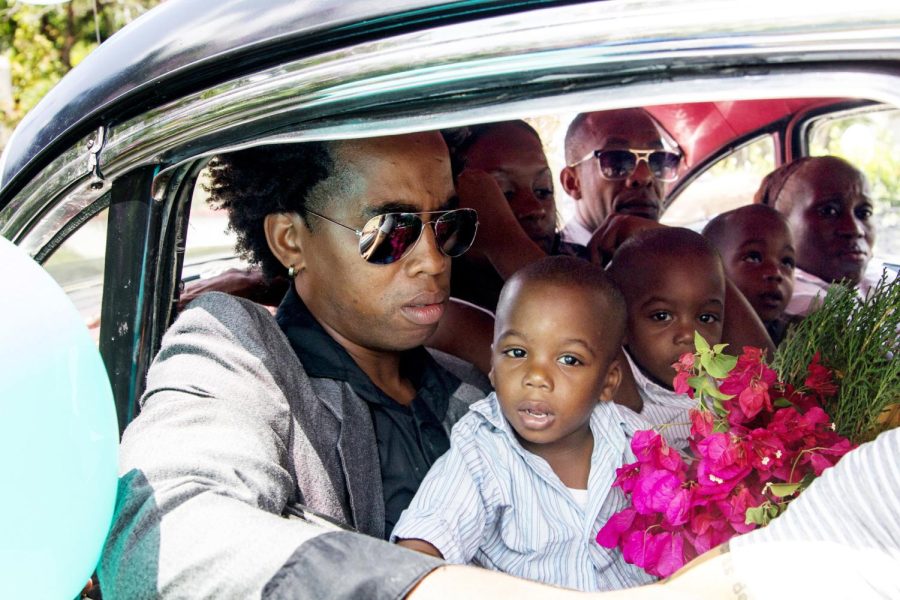Mishkin Gallery’s ‘Lazaro and the Shark’ shows Cuba under the surface
February 13, 2023
Professor Ted Henken, from Baruch College’s Department of Sociology and Anthropology, attempted to have a critical approach to life in Cuba. It is a place of beauty and pain; “Cuba with all the warts,” he called it. He made sure not to depict it falsely, as many scholars do by promoting an image of Cuba that fits in with their artistic vision or political agenda.
William Sabourin O’Reilly was born in Havana, Cuba, and moved to New Orleans, Louisiana 24 years ago. He has been a filmmaker for 20 years, passionate about telling stories on politics and culture. Shortly after he moved to New Orleans, his path crossed with Henken. They have been friends ever since, which led to the documentary, “Lazaro and the Shark.” The film is scheduled to screen from Feb. 6 to 10 at the Mishkin Gallery’s upcoming exhibition Carnival on Film: Procession as Politics. There will also be a conversation with O’Reilly and Henken on Feb. 7.
In 2006, Tomas Montoya Gonzalez, the executive producer, had the idea to make the documentary. Gonzalez introduced O’Reilly to different people in Cuba and started interviewing them. “At the start of every documentary, you just shoot– there wasn’t a storyline. People respond and you start weaving”, O’Reilly said.
Lazaro, the protagonist in the film, was initially the crew’s fixer, guiding and providing aid to them. But in 2013, his wife got pregnant with triplets and was going to be sent to Venezuela on an American mission.
“By that time, since I became more experienced in films and documentaries, I was more aware of storytelling techniques and how to structure the story. I knew that I needed a protagonist, an antagonist and a conflict. With this guy, I had a lot– he was going to become a father, he’s young, very charismatic and he’s also a leader of this conga group rivaling another group. The director, Shark, of the rival group is very exuberant, a character and has a different political view– he’s a communist. I just had to convince them,” O’Reilly said.
This was the turning point for him. They had a story and just needed the coverage. But the new challenge they faced was the carnival. It was scheduled for every July in Santiago and the team was stuck in New Orleans.
“So what do you do from July to July? You just wait and cross your fingers that nothing really crucial happens in their lives.”
“Truth is stranger than fiction,” Henken said on the review of the documentary.
“It just seemed to me that they couldn’t have invented a more interesting and dramatic story first because of the rivalry, but also because of the specific characteristics and dramatic development of the lives of the four characters.”
Henken points out other important aspects of the documentary such as Lazaro being a single father, which is rare, especially in Cuba, and that every character in the film is black, which wasn’t intentional but is “a powerful but indirect thing.”
Furthermore, the issue of immigration, is seen with Rubiester, a poet, who also writes songs. His work focuses on calling out the government and his dilemma of whether to leave Cuba in hopes for a better life, or staying with his family. Another important topic to Henken is the“monolithic entity” idea people view in Cuba. The consequence, as Henken said, is that it erases the complexity within Cuba.
Yet, he assures that the documentary will instead brilliantly focus on the complex political thought.
“The government is almost absent except you see the result of government decisions. You focus all on the people. But you don’t just focus on the people as an anonymous mass, you focus on the different individuals and groups and the complex relationships.” Henken said, claiming that this is what foreigners do not understand when looking at Cuba.
To really get into Cuba’s complexities and to understand the current political situation, Henken suggests the podcast “Scattered.” The podcast tells a story about a Cuban American who goes back to Cuba after his father’s death. Another recommendation is a book called “Finding Mañana” by Mirta Ojito, which is about a Cuban American who came with the Mariel boatlift in 1980. O’Reilly suggests a YouTube channel by Eliécer Avila, where he updates about Cuba with video testimonies and denouncements people send him.
From this documentary, there are many different things the audience can take away. Henken hoped that though the pretext may be about conga, we could see “Cuba under the surface” as the subtitle suggests. Sabourin hopes that “we are able to be more honest about the world in Cuba and the experiences there, and to have the courage to tell it, and to find inspiration from it.” He also would love for people to spread the word and feel pride in the legacy and heritage that being Cuban offers while denouncing what is holding them back.
This documentary overall reminds us that instability still resides in the world, even if we might not directly experience it. Not only did O’Reilly showcase a specific Cuban experience, but he also captured the drastic influence a government can have on countless people. From their daily lives to big events like the carnival, the government plays an integral role in all of it. Most importantly, he makes viewers identify with the inescapable feelings that trail along due to that damage.







